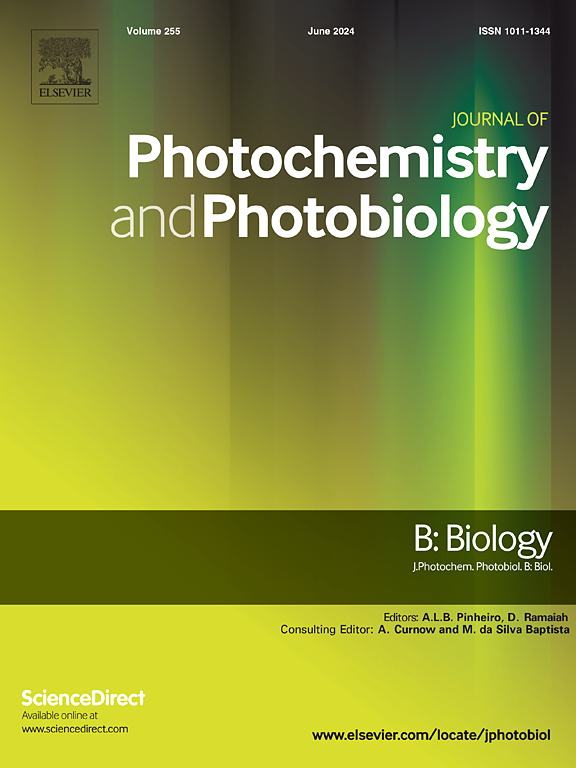飞秒激光诱导心肌切口:精密心脏手术新工具的临床前研究
IF 3.9
2区 生物学
Q2 BIOCHEMISTRY & MOLECULAR BIOLOGY
Journal of photochemistry and photobiology. B, Biology
Pub Date : 2025-07-04
DOI:10.1016/j.jphotobiol.2025.113221
引用次数: 0
摘要
背景先进的精确激光心肌组织切除技术仍需进一步探索。飞秒激光技术以其高精度和在生物组织处理中相对较小的附带损伤而闻名,在心肌切除方面显示出巨大的前景。目的观察激光功率和扫描速度对心肌切割效果的影响,评价飞秒激光在心肌切割中的可行性和临床应用潜力。方法以猪心脏为实验对象,在不同功率(1.0 W ~ 5.0 W)和扫描速度(1.0 mm/s ~ 4.0 mm/s)下,对1.0 cm3的立方体积进行激光切割。采用1064 nm飞秒光纤激光器,以500 kHz的重复频率发射持续时间为179 fs的脉冲。数字光学显微镜测量切口宽度、深度和热损伤面积。采用相关分析、线性回归等统计方法分析各变量之间的关系,病理检查评估组织结构及损伤程度。结果激光功率和扫描速度显著影响切割宽度、深度和热损伤程度,其中激光功率起决定性作用,与切割宽度、深度和热损伤呈明显正相关。扫描速度主要影响切割效率,间接影响切割效果。病理检查显示,激光功率增加导致心肌组织热损伤的改变,表现为心肌细胞质嗜酸性增强。结论飞秒激光技术通过精细的功率和扫描速度调节,实现了心肌的精确切割,证明了其卓越的安全性和可行性,同时显示了巨大的临床潜力。相关机制有待进一步研究。本文章由计算机程序翻译,如有差异,请以英文原文为准。
Femtosecond laser-induced myocardial incision: Preclinical study towards new tools for precision cardiac surgery
Background
Advanced precise laser techniques for myocardial tissue removal still need to be further explored. Femtosecond laser technology, renowned for its high precision and relatively minor collateral damage in biological tissue processing, shows significant promise for myocardial excision.
Objective
This study examined the effects of laser power and scanning speed on myocardial cutting outcomes, as well as to evaluate the feasibility and clinical application potential of femtosecond lasers in myocardial incision.
Methods
In this in vitro study using porcine hearts, cubic volumes (1.0 cm3) were laser-cut at varying powers (1.0 W to 5.0 W) and scanning speeds (1.0 mm/s to 4.0 mm/s). A 1064 nm femtosecond fiber laser emitting 179 fs duration pulses at a repetition rate of 500 kHz was used. Digital optical microscopy measured incision width, depth and thermal injury area. Statistical methods including correlation analysis and linear regression were applied to analyze the relationships between variables, and pathological examinations assessed tissue structure and injury extent.
Results
Laser power and scanning speed significantly influenced the cutting width, depth, and extent of thermal damage, with laser power played a decisive role andshowed a clear positive correlation with cutting width, depth, and thermal injury. Scanning speed primarily affected cutting efficiency, indirectly influenced cutting outcomes. Pathological examination revealed that increased laser power led to changes in thermal damage to myocardial tissue, characterized by enhanced eosinophilia of myocardial cell cytoplasm.
Conclusions
Femtosecond laser technology facilitates precise myocardial incision through meticulous modulation of power and scanning speed, validated exceptional safety and feasibility while highlighting substantial clinical potential. Further research is required to investigate related mechanisms.
求助全文
通过发布文献求助,成功后即可免费获取论文全文。
去求助
来源期刊
CiteScore
12.10
自引率
1.90%
发文量
161
审稿时长
37 days
期刊介绍:
The Journal of Photochemistry and Photobiology B: Biology provides a forum for the publication of papers relating to the various aspects of photobiology, as well as a means for communication in this multidisciplinary field.
The scope includes:
- Bioluminescence
- Chronobiology
- DNA repair
- Environmental photobiology
- Nanotechnology in photobiology
- Photocarcinogenesis
- Photochemistry of biomolecules
- Photodynamic therapy
- Photomedicine
- Photomorphogenesis
- Photomovement
- Photoreception
- Photosensitization
- Photosynthesis
- Phototechnology
- Spectroscopy of biological systems
- UV and visible radiation effects and vision.

 求助内容:
求助内容: 应助结果提醒方式:
应助结果提醒方式:


